|
Mind the Fungi | Art & Design Residencies
Theresa Schubert |
Fara Peluso
3 July - 28 December 2020
Virtual
opening:
2 July 2020, 6PM via Facebook
Live
Curated
by Regine Rapp and Christian de Lutz
FUTURIUM
| Futurium Lab, Alexanderufer 2, 10117 Berlin
Mon, Wed, Fri, Sat, Sun 10 am – 6 pm, Thu 10 am – 8 pm,
Tue closed, Free entrance
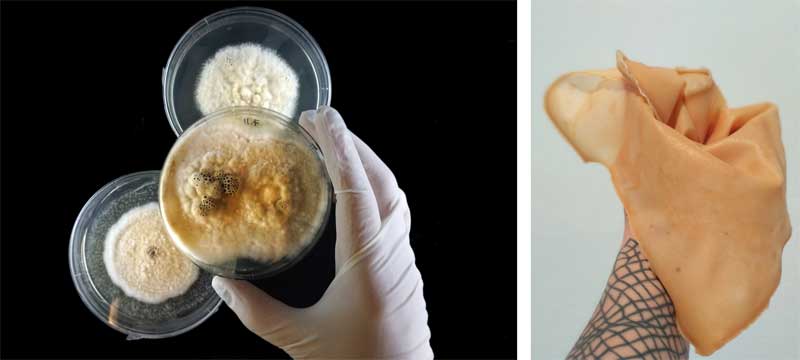
The Artist- and Design-Residencies of Mind the Fungi
with artist Theresa Schubert and artist designer Fara Peluso bring
in art and design as constructive sources of ideas for this research
project. Schubert studied the effects of sound on fungal growth.
Peluso has done research on new biomaterials on the symbiotic basis
of algae and fungi. The artistic and design related works are a
result of a close collaboration with both departments of TU Berlin’s
Institute of Biotechnology – Prof. Vera Meyer’s department
of Applied Molecular Microbiology and Prof. Peter Neubauer’s
department Bioprocess Engineering.
For artist Theresa Schubert fungi are perfect network metaphors,
not only due to their aesthetics but also as a philosophy of relations,
process and space. For her Box Experiment she built soundproofed
boxes with speakers and selected fungi mycelia stemming from the
public Walk & Talks. For several weeks she exposed fungi to
specific sound frequencies. Schubert was excited to see this had
an effect on mycelial growth and metabolism. From this she developed
the interactive video installation Sound for fungi. Homage to
Indeterminacy that stimulates virtual fungi hyphae and via a
hand tracking sensor letting visitors take on the role of a sound,
modulating the hyphae growth and movement.
Artist designer Fara Peluso works in Material Driven Design
and Bioart and connects human beings with nature, organisms and
biological processes. Niche is a hybrid installation and
living sculpture, which explores co-existence between fungi and
algae microorganisms. Taking inspiration from symbiotic relationship
between these organisms in lichens, Peluso combines nature, biotechnology
and art. The sculpture Zweisamkeit combines an oak wood topography
and several layers of biomaterial representing form in metamorphosis.
It reflects on human development of the landscape, focusing on how
we have defined and shaped our natural surroundings, but are in
turn shaped by biological forces in the environment.
In addition to the work of Schubert and Peluso, the exhibition also
presents new results from the laboratories of the Institute of Biotechnology
at TU Berlin, for example, a prototype of a bicycle helmet made
of tree mushroom mycelium by Bastian Schubert (Dep. Applied and
Molecular Microbiology) or examples of symbiotic organisms in lichens
(Dep. Bioprocess Engineering).
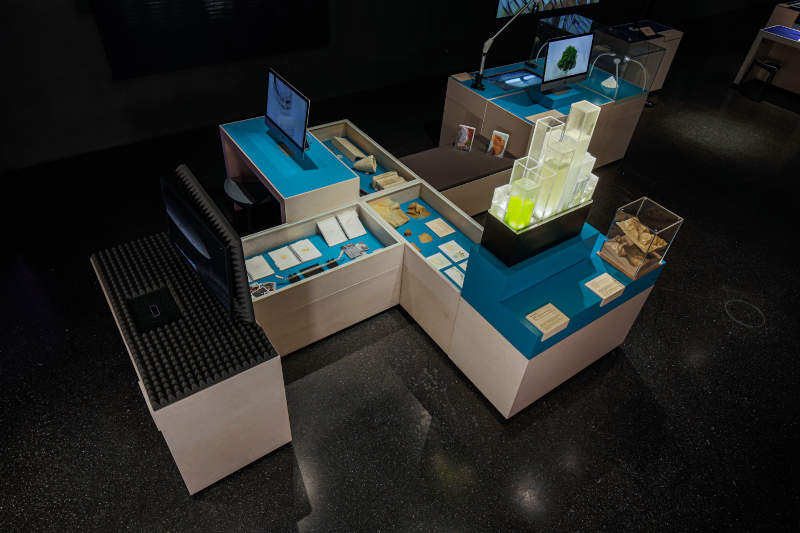
Exhibition
view: Mind the Fungi | Art & Design Residencies
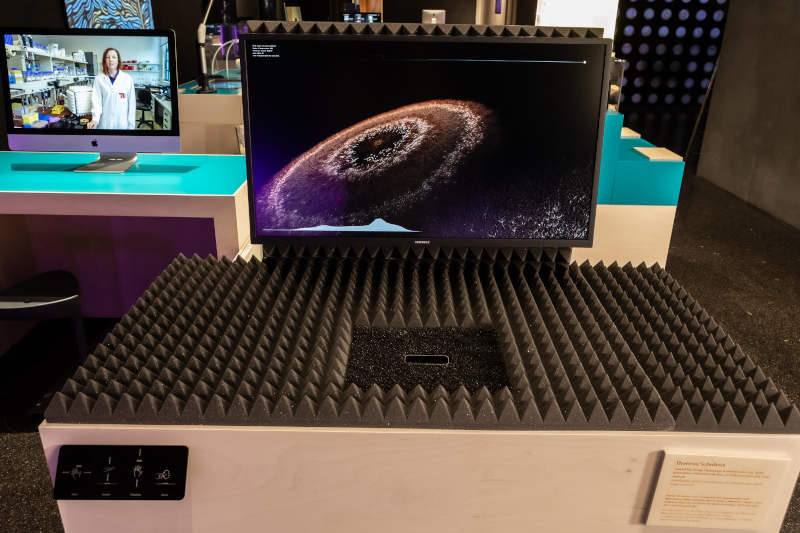
Theresa
Schubert, Sound for Fungi. Homage to Indeterminacy,2020
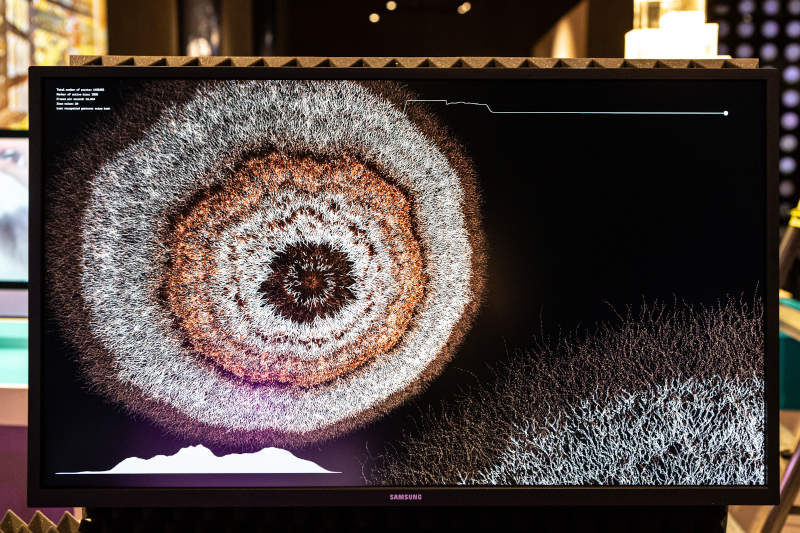
Theresa
Schubert, Sound for Fungi. Homage to Indeterminacy,2020

Theresa
Schubert, Sound for Fungi. Homage to Indeterminacy,2020
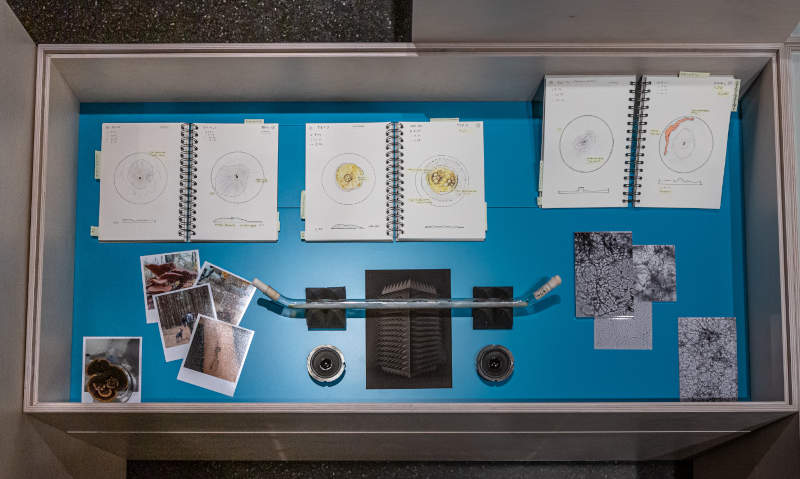
Theresa
Schubert, Sketches and object from the project Box Experiment,
2020
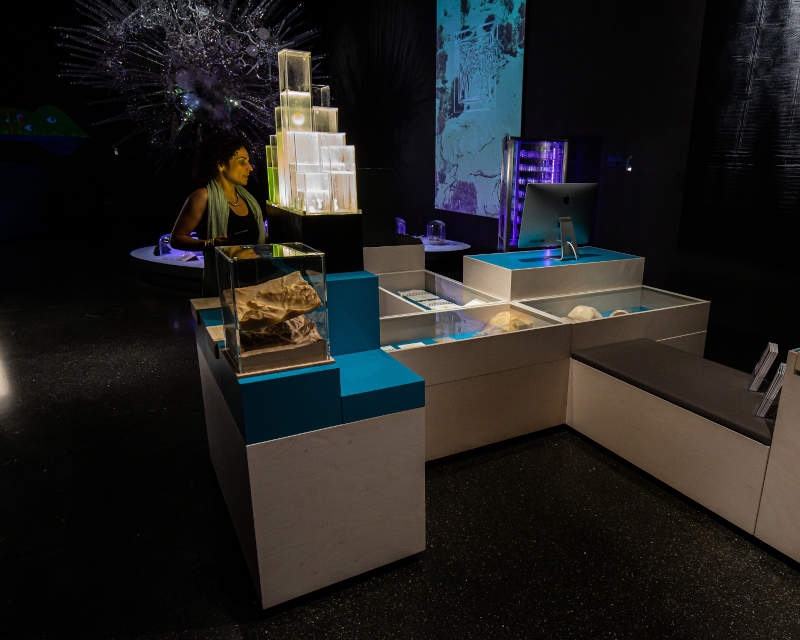
Fara Peluso, Zweisamkeit (foreground), Niche (background),
2020
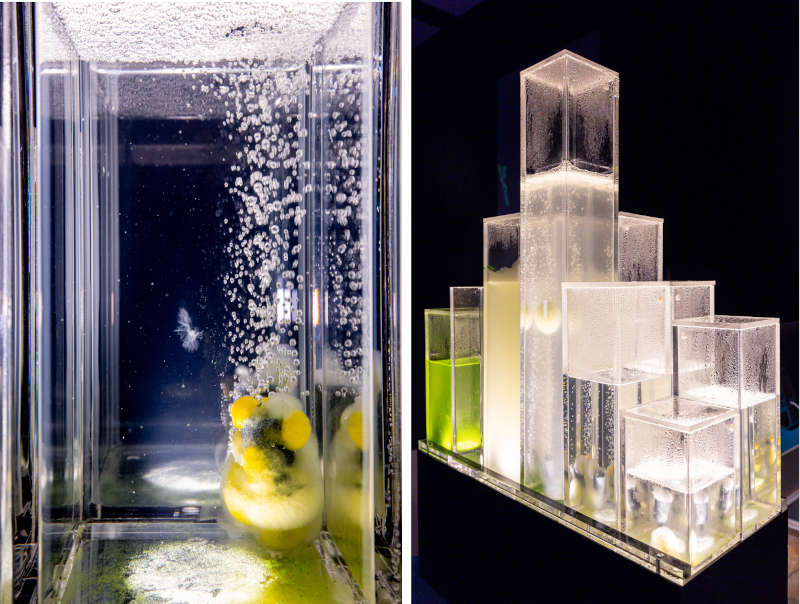
Fara Peluso, Niche, 2020

Fara Peluso, Niche, 2020
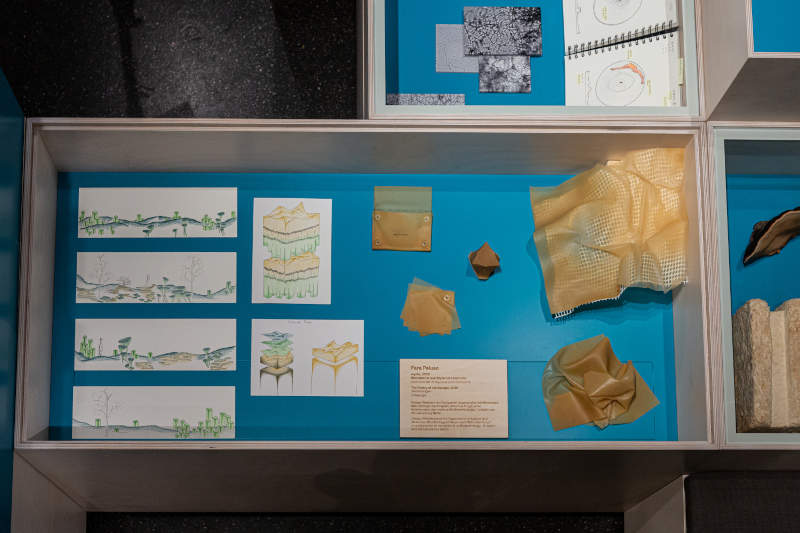
Fara Peluso, The Poetry of Landscape, drawings; Biomaterial
made from mycelium and diatomit, 2020
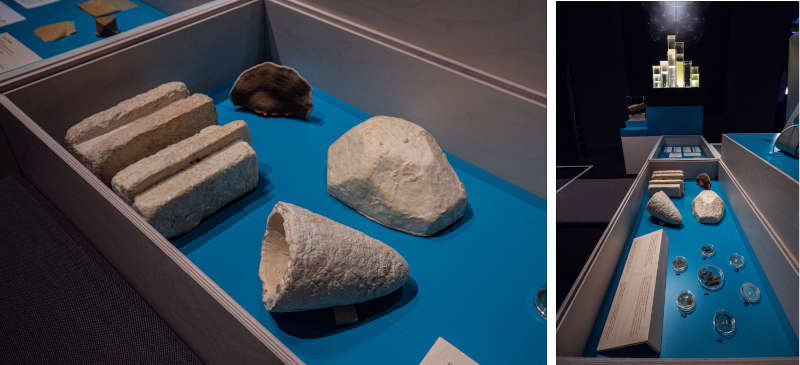
New
findings and objects fromLaboratorien of the Institute of Biotechnology,
TU Berlin: Prototype of a bike helmet made form tree mushroom mycelium
by Bastian Schubert (Applied and Molecular Microbiology)
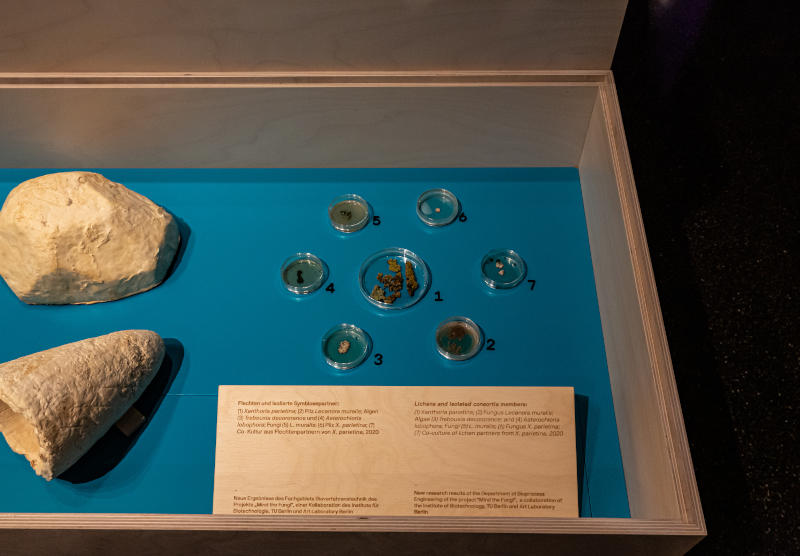
New
findings and objects fromLaboratorien of the Institute of Biotechnology,
TU Berlin: Samples of symbiotic organisms
from lichens (Bioprocess Engineering)
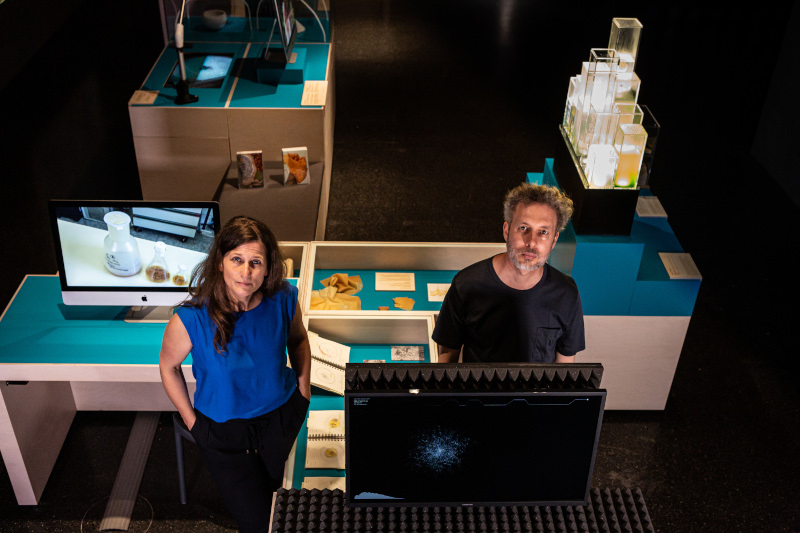
Regine Rapp and Christian de Lutz, curators
Mind the Fungi (2018-20)
is a collaborative project between the Institute of Biotechnology
TU Berlin and Art Laboratory Berlin. Biotechnologists and process
engineers are researching local tree fungi and lichens (Prof. Vera
Meyer/ Applied Molecular Microbiology; Prof. Peter Neubauer / Bioprocess
Engineering). The focus is on developing new ideas and technologies
for fungal and lichen based materials for the future. Art Laboratory
Berlin bridges the gap between science, art, design and the public
and offers various Citizen Science formats. The Artist- and Design-Residencies
with Fara Peluso and Theresa Schubert bring in art and design as
constructive sources of ideas for this research project.
Thanks to Vera Meyer, Bertram Schmidt, Carsten Pohl as well as Peter
Neubauer and Stefan Junne.
With the generous support of the Technische Universität Berlin
as part of the program Citizen Science - Forschen mit der Gesellschaft:

and

|
